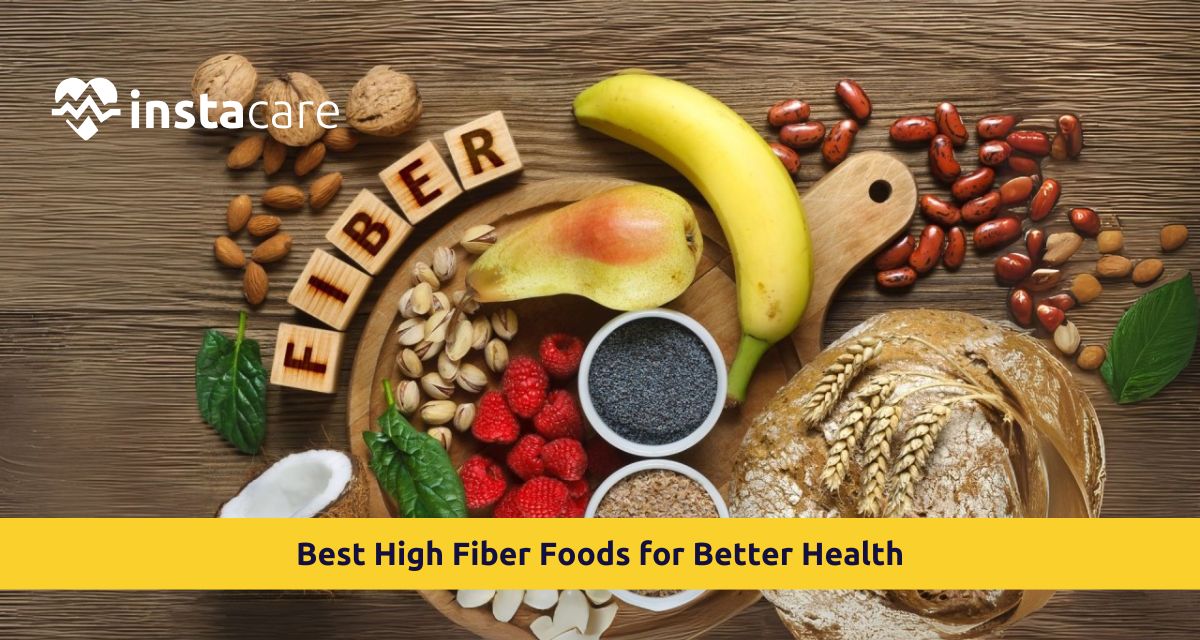The essential nutrient that forms part of a balanced diet is fiber. Human bodies rely primarily on fiber as their main digestive ingredient for proper health maintenance. Weight management benefits from fiber consumption as it reduces cholesterol levels and controls glucose regulation. Knowledgeable identification of fiber sources enables individuals to develop better eating choices for their health.
Major Types & Functions of Fiber
Fiber is of two main types - soluble and insoluble.
- Soluble fiber dissolves and reduces the cholesterol level and blood sugar level and so on. It consists of oats, beans, and some fruits.
- Insoluble fibers are not soluble in water and bulk up stools to regularize bowel movements. It is found in whole grains, nuts, and most vegetables. Both types are essential in a balanced diet and offer distinct health benefits.
This does not merely signify digestion. For example, a diet high in fiber supports overall good health by promoting the growth of healthy bacteria within the gut. This would lead to a lower risk of diseases, as a stronger immune system is more effective in combating them.
Fiber fills the tummy much better than other foods, thus reducing hunger, which in turn helps with effective weight management. Adding fiber to your diet can lead to the best overall health.
Various Kinds of Foods Highest in Fiber
We've listed some of the finest fiber-rich foods to increase your daily intake that are great, above all, for adding to meals easily.
Legumes
Legumes such as beans and lentils and chickpeas rank as some of the top fiber-rich foods in the diet. For example, a single cooked cup of black beans can provide as much as 15 grams of fiber. Chickpeas are also going to rank very high in this one because 1 cup of cooked chickpeas contains about 12 grams of fiber. Adding in a variety of legumes is not just adding to a whole lot more fiber, but also protein and other nutrients.
Whole Grains
These are also some of the best sources for fiber. Good examples would be oats with about 4 grams of fiber per cooked cup. They are also rich with beta-glucans, a soluble fiber that helps in lowering the cholesterol level. Another great whole grain is quinoa, which has around 5 grams of fiber per cooked cup. You can almost double your fiber intake by turning back to whole grains from refined along with all the other health benefits of the grains.
Fruits
Besides being effusively delicious, fruits have fiber. For instance, raspberries are among the most fiber-rich fruits, with about 8 grams of fiber in every cup. Pears will also be heavy hitters; a medium-sized pear will contain about 5-6 grams of fiber, especially when consumed with the skin. Many more high-fiber fruits like apples, bananas, and oranges can easily fit into your diet.
The Vegetables Boost
Mixing vegetables into a particular food item greatly aids in fiber intake. Broccoli is a heavy, dense vegetable and contains approximately five grams of fiber in a cooked cup. More importantly, such minerals and vitamins are also being supplied by the above vegetables for general well-being. Carrots also contribute some fiber, with about four grams of fiber in a cup of raw carrots. Adding more color to your meals with various veggies will also ensure that some fiber and nutrients come along with it.
The Nuts and the Seeds
They're good for you, contain healthy fats, and fiber in substantial amounts. For example,
chia seeds offer a person about ten grams of fiber for every ounce (two tablespoons) of these seeds consumed. Almonds offer an excellent alternative, yielding a healthy dose of fiber in one serving which is a handful, an ounce. Eating nuts and seeds can help satisfy fiber requirements along with various overall health benefits, including protein and healthy fats.
Whole Grain Breads and Cereals
When purchasing bread or cereal, always remember to choose whole-grain ones, as they will contribute greatly to higher fiber consumption. A slice of whole wheat bread could pack 2-3 grams of fiber per serving if whole wheat were listed as its first ingredient. Some breakfast cereals could have anywhere from 5-10 grams of fiber in a serving and are considered high-fiber. This would thus be a great way of packing one's body with fiber in the morning.
Some Fiber Intake Suggestions
- Starting high-fiber foods requires a step-by-step increase in your fiber consumption.
- Drinking enough water alongside maintaining hydration is essential for digestion while fiber plays an important role in the digestive system.
- Whole foods comprise the preferred dining choice when you avoid processing any food ingredients.
- Raw whole grains as well as vegetables and fruits, have more fiber content compared to their refined versions.
- The nutritional information labels on products let you detect which ones have higher fiber content enabling more informed purchases at the store.
Conclusion
Eating high-fiber foods daily represents the best method to preserve excellent health. You have numerous high-fiber choices with beans and lentils, whole grains, fruits and vegetables, nuts, and seeds which make achieving fiber intake for any reason each day straightforward. Relief in digestive health and regular bowel movements represent one advantage among multiple health benefits linked to consuming foods that are high in fiber. Eating healthy foods together with a high-fiber diet will make these benefits possible to achieve.
Please book an appointment with the
best Nutritionist in Lahore, Karachi, Islamabad, and all major cities of Pakistan through
InstaCare, or call our helpline at 03171777509 to find a verified doctor for your disease.

